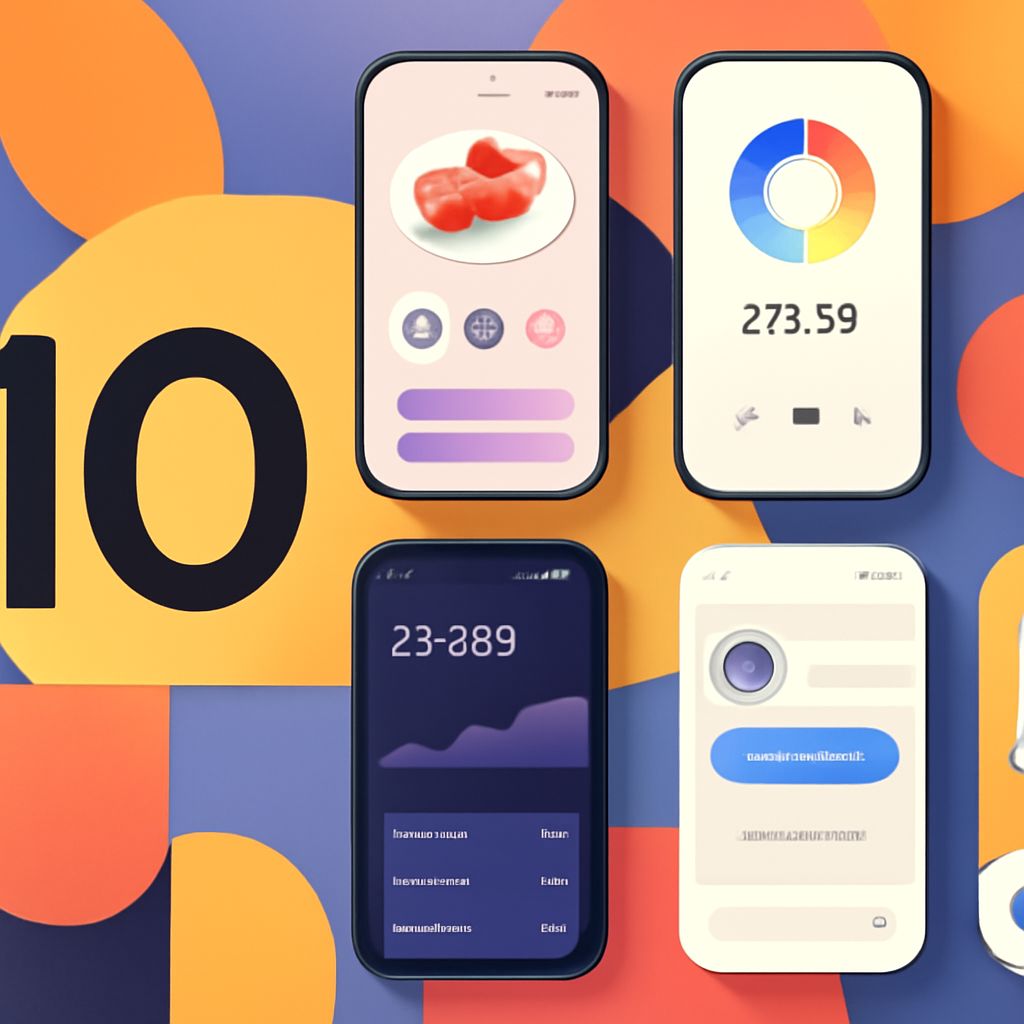The Future of Mobile App UI Design: Trends to Watch in 2025
The landscape of mobile app UI design is constantly evolving, driven by technological advancements, user expectations, and design innovations. As we look ahead to 2025, several trends are emerging that promise to reshape how users interact with applications. Understanding these trends is crucial for designers and developers who want to create engaging, user-friendly experiences. This article delves into the anticipated changes in mobile app UI design, highlighting key trends that will define the future.
1. Minimalism and Simplified Interfaces
In recent years, minimalism has gained popularity in design, and this trend is set to continue into 2025. A simplified interface reduces cognitive load, making it easier for users to navigate through applications.
- **Focus on essential elements**: Designers will prioritize core functionalities while eliminating unnecessary features.
- **Use of white space**: Ample white space will enhance readability and interaction, making content stand out.
As users become more accustomed to streamlined experiences, the demand for minimalistic designs will grow.
2. Dark Mode as a Standard
Dark mode is no longer a feature for select apps; it is becoming standard. This design trend not only looks aesthetically pleasing but also has practical benefits.
- **Reduced eye strain**: Dark mode can minimize glare and reduce eye discomfort during prolonged use.
- **Battery-saving benefits**: For OLED displays, dark mode can save battery life significantly.
As more applications incorporate this feature, it will likely become a foundational aspect of mobile UI design.
3. Voice User Interface (VUI)
The integration of voice technology into mobile apps is a trend that is slowly gaining traction. By 2025, VUI is expected to play a crucial role in app interactions.
- **Hands-free operation**: Voice commands will allow users to perform tasks without manually navigating through the app.
- **Accessibility**: VUI will make applications more accessible to individuals with disabilities, creating a more inclusive experience.
As voice recognition technology improves, the adoption of VUI will redefine user interactions with apps.
4. Augmented Reality (AR) Integration
AR technology is on the rise, and its integration into mobile applications is expected to expand significantly by 2025. This trend is particularly evident in retail, gaming, and educational apps.
- **Enhanced user experiences**: AR can create immersive interactions, making the app more engaging.
- **Real-world applications**: Users can visualize products in their environment, improving their shopping experience.
As AR capabilities become more accessible, designers will explore inventive ways to incorporate this technology into UI design.
5. Biometric Authentication
With increasing concerns about security and privacy, the use of biometric authentication methods is becoming more prevalent in mobile applications.
- **Facial recognition**: This technology will facilitate secure and seamless logins, enhancing user convenience.
- **Fingerprint scanning**: Users are likely to prefer biometric methods over traditional passwords, leading to a shift in authentication design.
Incorporating biometric features will not only enhance security but also improve overall user experience.
6. Customizable UI Elements
In 2025, users will expect more control over their app interfaces. Customization options will allow users to tailor their experience according to their preferences.
- **Theme selection**: Users can choose color schemes or layouts that suit their style.
- **Widget integration**: Custom widgets can provide users with essential information at a glance, enhancing usability.
Giving users the freedom to customize their UI will lead to more personalized and engaging experiences.
7. Motion Design and Micro-Interactions
Motion design and micro-interactions will play a significant role in enhancing user engagement. By 2025, these design techniques are expected to be integral to mobile app development.
- **Feedback through animations**: Subtle animations can indicate loading status, successful actions, or errors, providing users with immediate feedback.
- **Enhanced storytelling**: Motion design can guide users through the app, creating a narrative that makes navigation intuitive and enjoyable.
Designers will need to strike a balance between aesthetics and functionality, ensuring that motion elements enhance rather than distract the user.
8. Sustainable Design Practices
With a growing emphasis on sustainability, designers are increasingly considering the environmental impact of their work. By 2025, sustainable design practices will become more prevalent in mobile app UI design.
- **Energy-efficient design**: Optimizing apps for lower energy consumption can contribute to environmental sustainability.
- **Digital well-being**: Apps promoting healthy usage patterns will gain traction, encouraging users to maintain a balanced relationship with their devices.
Designers who prioritize sustainability in their work will resonate with environmentally conscious users.
9. Artificial Intelligence (AI) and Machine Learning (ML) Integration
The integration of AI and ML in mobile applications is set to redefine user experiences by 2025. These technologies can provide personalized interactions and predictive features.
- **Personalized recommendations**: Apps can analyze user behavior and preferences to suggest tailored content or products.
- **Adaptive interfaces**: UI can evolve based on user interactions, creating a more intuitive experience.
As AI and ML technologies continue to advance, their influence on mobile app UI design will become more pronounced.
10. 5G Technology and Its Impact
The rollout of 5G technology is expected to transform mobile app capabilities significantly. With faster speeds and reduced latency, designers can explore new possibilities in UI design.
- **High-quality streaming**: Apps will be able to support high-definition video and graphics, elevating the overall user experience.
- **Real-time data processing**: Enhanced connectivity will enable applications to process data in real-time, leading to dynamic user interactions.
5G’s impact on mobile app design will drive innovation, encouraging designers to create richer and more engaging experiences.
Conclusion
As we approach 2025, the future of mobile app UI design is poised for transformative changes driven by technology, user preferences, and design philosophies. By staying ahead of these trends, designers and developers can create mobile applications that not only meet users’ needs but also exceed their expectations. Embracing minimalism, integrating advanced technologies, and prioritizing user experience will be key to shaping the apps of tomorrow. Those who adapt to these changes will undoubtedly thrive in the ever-evolving world of mobile app development.
FAQ
What are the key mobile app UI design trends expected in 2025?
Key trends include the use of augmented reality, dark mode optimization, and personalized interfaces driven by AI.
How will augmented reality influence mobile app UI design in 2025?
Augmented reality will enhance user engagement by overlaying digital elements onto the physical world, creating immersive experiences.
Why is dark mode becoming essential in mobile app UI design?
Dark mode reduces eye strain, saves battery life on OLED screens, and offers a modern aesthetic that appeals to users.
What role will artificial intelligence play in mobile app UI design in 2025?
AI will enable personalized user experiences by analyzing user behavior and preferences to tailor app interfaces accordingly.
How important is accessibility in mobile app UI design trends for 2025?
Accessibility will be crucial, with designs focusing on inclusivity to ensure that all users, regardless of their abilities, can navigate apps effectively.
What is the impact of minimalist design on mobile app UI trends?
Minimalist design will continue to thrive by prioritizing simplicity and functionality, allowing users to focus on essential features without distractions.



